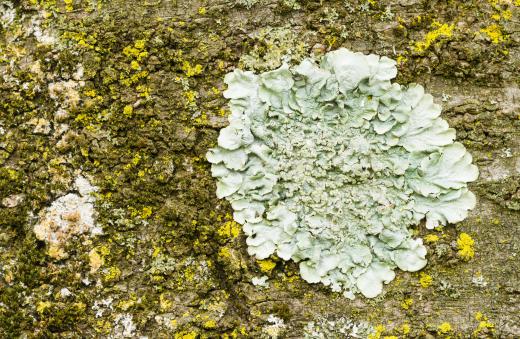What are Some Ordovician Organisms?
 Michael Anissimov
Michael Anissimov
Ordovician organisms lived during the Ordovician period, which lasted between approximately 488.3 to 443.7 million years ago. It began with a mass extinction called the Cambrian-Ordovician extinction events, which wiped out 50% of all multicellular organisms in the fossil record. At the time, all known multicellular organisms were exclusively marine. The number of known fossils from the Ordovician numbers about 500, substantially more than the 200 or so available from the Cambrian before it.
The Ordovician period featured episodes of adaptive radiation and diversification only exceeded by the so-called Cambrian explosion, which occurred about 60 million years earlier. The end-Cambrian mass extinctions seriously impacted brachiopods (a stationary shelled organism superficially resembling bivalves), trilobites (which were never the same again), and early jawless fishes called conodonts. During the Ordovician, other animals, such as articulate brachiopods, cephalopods (sophisticated mollusks), and crinoids (sea lilies) largely replaced the Cambrian animals which came before them. Most notably, articulate brachiopods almost completely displaced trilobites in the shallow seas where they both lived. These organisms would go on to dominate marine faunas throughout the rest of the Paleozoic era.

Although trilobites were not as successful as they were during the Cambrian, they still were numerous and diverse, sharing the bottom of the food chain with articulate brachiopods. Numerous gastropods (snail-like animals) evolved during this time. Numerous jawless fish existed, with jawed forms appearing towards the end of the period. The Ordovician saw the evolution of the first corals and the first coral reefs, the first reefs to be built in tens of millions of years, since the thriving of the ancient archeocyathids during the Early Cambrian. The Ordovician strata are filled with graptolites, the remains of colonial marine animals called arrow worms.

The Ordovician was marked by the emergence of the first animals with sophisticated nervous systems and a substantial amount of brain tissue, as evidenced by fossils of nautiloid cephalopods, the dominant predators of the period. These relatively intelligent, tentacled, big-eyed, hard-shelled mollusks may have outcompeted earlier apex predators like the anomalocarids. Large cephalopods had appeared during the Late Cambrian but diversified greatly throughout the Ordovician.
The Ordovician saw the emergence of the first land plants, non-vascular plants which would have resembled modern-day lichen, liverworts, and mosses. These simple plants tended to cluster close to the sea or streams. No body cast fossils of terrestrial animals from the Ordovician have been found, although some of the earliest terrestrial trace fossils appear during this period, probably made by early myriapods such as millipedes. The oldest currently known fossil of a land animal is a 1-cm fossil millipede dated to 428 million years ago, just 16 million years after the end of the period. Ordovician fossils of terrestrial animals may yet be discovered.
The discovery of fungal hyphae strongly resembling a special type of fungi found in the roots of the majority of all plants suggests that this ancient symbiotic relationship began during the Ordovician.
AS FEATURED ON:
AS FEATURED ON:












Discuss this Article
Post your comments